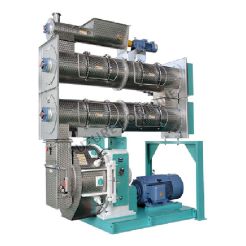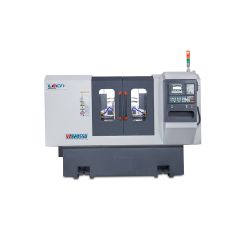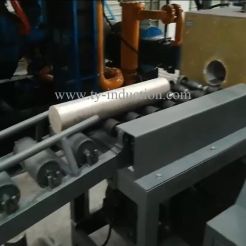HD-R-R-1300 WIDE-BELT SANDER
The single-sided front and back double roller thickness-setting sander is a mechanical equipment used for sanding the surface of plates or parts. Different models of single-sided front and back double roller thickness-setting sanders may vary in specific parameters and functions, such as processing width, thickness range, sanding belt size, motor power, sanding belt speed, and feeding speed.
Product Description
HD-R-R-1300 WIDE-BELT SANDER

Single-sided Front and Back Double Roller Thickness-setting Sander Introduction
The single-sided front and back double roller thickness-setting sander is a mechanical equipment used for sanding the surface of plates or parts.
It typically has the following characteristics and advantages:
1. Double roller structure: It adopts two sanding rollers arranged one after the other, enabling a single-sided one-time feeding to complete the sanding operation, improving work efficiency.
2. Thickness-setting function: It can precisely control the thickness of the processed workpiece to ensure the dimensional accuracy after processing.
3. Adjustable: The two rollers may have different hardnesses, making it convenient to adjust the sanding force to adapt to different materials and processing requirements.
4. High-power motor: It provides sufficient power to ensure the stable operation of the equipment, without jamming, and less likely to damage the plates.
5. Waterproof and rust-proof treatment: Some key parts such as bearings and photoelectric components are treated with waterproof and rust-proof measures to extend the service life of the equipment.
6. Safety protection: It is equipped with multiple protection devices such as overload, low air pressure, and leakage protection. When a fault occurs, it can automatically stop and perform emergency braking to ensure production safety.
7. Widely applicable: It is suitable for surface treatment of flat plate-like materials such as stainless steel, aluminum plate, copper plate, magnesium plate, artificial stone, and natural stone. It can be used for processing such as thickness setting, grinding, wire drawing, sanding, polishing, deburring, oxide scale removal, and slag removal.
Different models of single-sided front and back double roller thickness-setting sanders may vary in specific parameters and functions, such as processing width, thickness range, sanding belt size, motor power, sanding belt speed, and feeding speed. When choosing, it is necessary to select the appropriate equipment according to the actual processing needs and material characteristics.
If you would like to know more about sanders, you can continue to ask me questions. At the same time, it is recommended to choose products from regular manufacturers when purchasing sanders to ensure quality and performance. Also, pay attention to the installation, commissioning, and operating specifications of the equipment to fully exert its functions and ensure safety.
SANDER PARAMETER
| NAME | PARAMETER |
| machine model | HD-R-R-1300 |
| working width | <1300mm |
| working thickness | 3-90mm |
| working length | >850mm |
| size of sand belt | 1340*2680mm |
| feeding speed | 0-65m/min adjust speed |
| power of feeding system | 11kw |
| inverter of feeding system | 11kw |
| reducer of feeding system | R87-17.08 |
| feeding conveyor belt type | vacuum/no vacuum/roller conveyor |
| sanding roller diameter | 320mm/400mm |
| roller type | steel roller |
| power of sanding roller | 75kw+55kw |
| sanding roller bearing brand | NSK |
| machine size | 3000L*2850W*2280H |
| machine weight | about 9500kgs |

To achieve precise processing of the sanding roller of a sanding machine, the following aspects can be considered:
1. High-precision processing equipment: Use advanced CNC machine tools and other equipment for turning, grinding and other processing operations to ensure processing accuracy.
2. Strict process control: Develop detailed processing technological processes and specifications, including the accurate setting of cutting parameters, feed rates, etc.
3. Accurate measurement and detection: Frequently use high-precision measuring tools such as micrometers and vernier calipers during the processing to conduct real-time monitoring and adjustment of dimensions, roundness, cylindricity, etc.
4. Temperature control: Pay attention to the temperature changes during the processing and take appropriate cooling measures to prevent the influence of thermal deformation on accuracy.
5. Tool selection and maintenance: Select the appropriate tool and ensure the sharpness and good condition of the tool to obtain an accurate processing effect.
6. Worker skills and experience: Operators need to have rich experience and superb skills and operate strictly according to the requirements.
7. Quality control system: Establish a complete quality control system to strictly check and inspect each link of the processing.
8. Material selection: Select high-quality and well-uniform raw materials to make rollers to reduce the influence of the material's own defects on processing accuracy.

Why do we use CHINT AC current transformer in our sander:
Reasons:
1. Current measurement: The motor of the sanding machine requires a certain amount of current during operation. By using an AC current transformer, the working current of the motor can be accurately measured to monitor the operating status of the motor.
2. Equipment protection: When the current of the sanding machine shows abnormal conditions, such as overload or short circuit, the AC current transformer can transmit the current signal to the protection device to cut off the power supply in time to protect the motor and other components of the sanding machine from damage.
3. Energy-saving control: Based on the measured current information, the operation of the sanding machine can be optimized and controlled to achieve energy-saving operation and reduce energy consumption.
Functions:
1. Current monitoring: Real-time monitoring of the working current of the sanding machine to provide current data for the operator to understand the operating condition of the equipment.
2. Fault diagnosis: Through the monitoring of the current, current abnormalities can be detected in a timely manner to help diagnose whether there are faults in the equipment, such as motor faults, transmission component faults, etc.
3. Protection function: When the current is abnormal, the protection device is triggered to protect the electrical system and mechanical components of the sanding machine and extend the service life of the equipment.
In summary, the application of AC current transformers in sanding machines is helpful to improve the operational reliability, safety, and energy efficiency of the equipment.
Why do we use frequency in our sander:
Reasons:
1. To achieve speed control: To meet the requirements of different processing techniques for the feeding speed, improving the processing quality and efficiency.
2. Energy saving: To adjust the motor speed according to the actual processing needs, avoiding the motor running at high power when it doesn't need to run at high speed, thereby achieving the purpose of energy saving.
3. To reduce mechanical shock: To make the motor start and stop processes more smooth, reducing the impact on mechanical components and extending the service life of the equipment.
4. To improve system stability: To be able to better adapt to load changes and ensure the stable operation of the feeding system.
Functions:
1. To precisely control the feeding speed: By adjusting the output frequency of the frequency converter, the precise control of the feeding speed can be achieved to meet the processing requirements of different panels.
2. Soft start and soft stop: To reduce the current impact during the motor start, reducing the equipment wear, and at the same time making the stop process more smooth to avoid material accumulation.
3. Overload protection: When the feeding system is overloaded, the frequency converter can automatically reduce the output frequency or stop the output to protect the motor and mechanical equipment from damage.
4. To optimize system performance: According to the actual operating conditions, the operating parameters of the motor can be automatically adjusted to improve the overall performance and efficiency of the system.
In conclusion, using frequency converters in the feeding system of sanding machines can improve the performance and reliability of the equipment, reduce energy consumption, extend the service life of the equipment, and meet different processing needs.
The working efficiency of the sander is mainly related to the following factors:
1. Grit size of the sanding belt: Coarser sanding belts generally remove materials at a faster rate, but the surface finish may be relatively poor; finer sanding belts are the opposite.
2. Speed of the sanding belt: A fast running speed of the sanding belt may improve the efficiency to a certain extent.
3. Pressure setting: Appropriate pressure can ensure effective sanding without affecting the efficiency.
4. Feed speed of the workpiece: Too fast or too slow feed speed will affect the efficiency and processing quality.
5. Motor power: Motors with high power usually can provide stronger power, which is helpful to improve the efficiency.
6. Type and design of the sander: Different types (such as disc type, belt type, etc.) and designs of sanders have different efficiencies.
7. Material and shape of the workpiece: Relatively soft materials are easier to sand, and complex shapes may require more time to process.
8. Maintenance status of the sander: Good maintenance ensures the normal operation of the machine and avoids affecting the efficiency due to downtime caused by faults.
The following are some key points for the maintenance of the sander in daily work:
1. Cleaning: Regularly clean the dust, debris and other sundries on the surface of the sander, sanding belt and the surrounding area.
2. Checking the sanding belt: Check whether the sanding belt is damaged or misaligned, and replace or adjust it in time.
3. Checking the transmission parts: Such as belts, chains, etc., to ensure that their tightness is appropriate and there is no wear.
4. Lubrication: Appropriately lubricate the relevant moving parts, bearings, etc.
5. Checking the electrical system: Ensure that the wiring is not damaged and plugs, switches, etc. are normal.
6. Tightening screws and nuts: To prevent loosening from affecting operation and accuracy.
7. Motor maintenance: Keep the motor clean and check the heat dissipation situation.
8. Regular calibration: To ensure processing accuracy and performance.
9. Pay attention to the working environment: Avoid working for a long time in an environment that is too humid, dusty or with too high or too low temperature.
10. Training operators: So that they can operate and maintain the sander correctly to avoid damage caused by improper use.
The following are some considerations when choosing the type of sanding belt for a sander:

1. Processed materials: According to the material of the workpiece, such as wood, metal, plastic, etc., choose a sanding belt suitable for this material. For example, for wood, sanding belts with different grits and materials may be required, while metals require more wear-resistant ones.
2. Purpose of sanding: Whether it is for rough grinding, fine grinding or polishing, different purposes require sanding belts with different characteristics.
3. Grit: Coarser grit is used for rapid material removal, and finer grit is used to obtain a smoother surface.
4. Material of the sanding belt: There are different materials such as aluminum oxide and silicon carbide, each with different performance characteristics.
5. Durability requirements: If it needs to be used for a long time with high intensity, choose a more durable sanding belt.
6. Flexibility: For some workpieces with complex shapes, a sanding belt with better flexibility may be required to better fit the surface.
7. Cost factor: Different types and qualities of sanding belts have different prices, and a balance should be made according to the budget.
For sanding the wood surface, setting the thickness and polishing, the grit numbers of the sanding belts to be selected are as follows:

- Sanding: If it is necessary to remove the flaws, scratches or unevenness on the wood surface, usually a sanding belt with 80 to 120 grit can be selected. The sanding belt in this grit range can effectively remove the unevenness on the wood surface without overly wearing the wood.
- Thickness setting: When it is necessary to accurately trim the thickness of the wood to a certain size, a sanding belt with 60 to 80 grit can be used. The sanding belt of this grit number can remove the material on the wood surface relatively quickly to help achieve the required thickness.
- Polishing: For the wood that needs to obtain a smooth and shiny surface, a sanding belt with 150 to 200 grit can be selected for polishing. Higher grit sanding belts (such as above 240 grit) can be used to further improve the surface finish.
It should be noted that the selection of the sanding belt will also be affected by factors such as the type of wood, hardness, and the required surface effect. In actual operation, it can be tested on a small piece of wood first to determine the most suitable grit number of the sanding belt. In addition, different brands and types of sanding belts may have slightly different effects, so the suggestions of the sanding belt manufacturer or consulting a professional woodworker can be referred to.
Email: hongyunchangsander@163.com
Mob.: +86 139 5321 1153
WeChat: +86 139 5321 1153
Whatsapp: +8613953211153
Add.: Daxin Town Jimo District Qingsao City Shandong Province China









